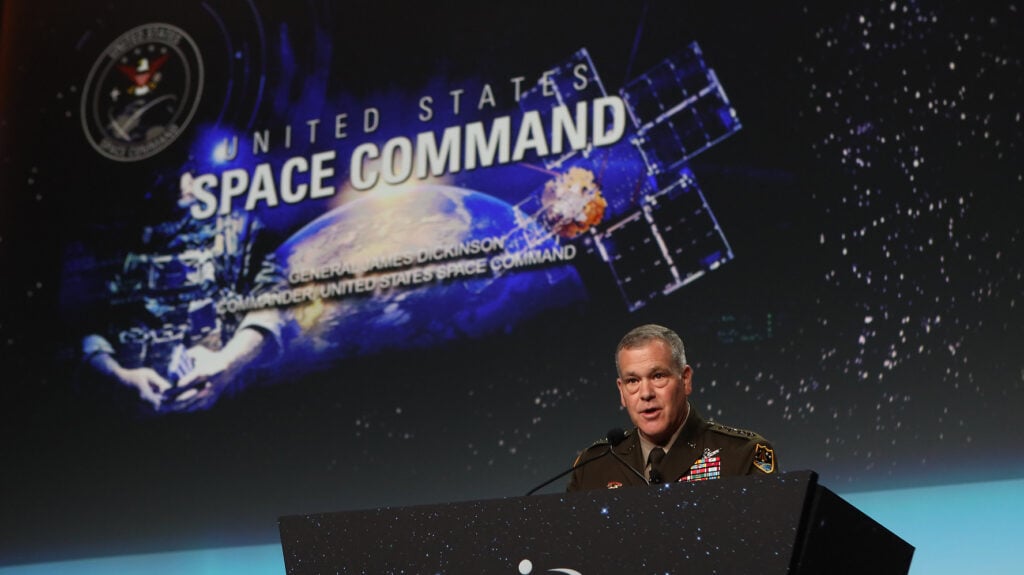
Gen. James H. Dickinson, Commander, US SPACECOM, speaks at the 2022 Space Symposium. (Credit: Space Foundation)
SMD 2022 — Space Command is now integrating “non-traditional” sensors, originally built for tracking and targeting ballistic missiles, into its network for keeping tabs on satellites and spacecraft, Gen. Jim Dickinson, SPACECOM commander, said today.
Those sensors “now provide increased fidelity to the understanding of the space environment,” he told the Space and Missile Defense Symposium in Huntsville, Ala.
Specifically, a SPACECOM spokesperson said in an email, the command is using “the Army-Navy Transportable Radar Surveillance-2, Sea-Based X-Band Radar, and Aegis radar platforms under our Global Sensor Management umbrella to provide improved domain awareness.”
The 2020 update to the Unified Command Plan (UCP) gave SPACECOM responsibility for global sensor management, i.e., matching the capabilities of the myriad radar, optical telescopes and space-based sensors, known as the Space Surveillance Network, that contribute to space domain awareness and missile warning to specific missions.
From the Army’s end, a spokesperson for Space and Missile Defense Command (SMDC) told Breaking Defense, “Army Space Support Teams and Space Control Planning Teams ensure Army space capabilities are fully integrated into planning and synchronized with operations at the division, corps, Army Service Component Command and combatant command levels. Everything they provide is intended to give joint force and Army ground commandeers the ability to outmaneuver adversary forces and fight at times and placed of their choosing.”
Dickinson said that SPACECOM now comprises 18,000 personnel, “based in 11 countries and 13 different time zones.” (He would not, however, be drawn on the likelihood that the command’s headquarters will end up here in Huntsville, saying only that the current environmental review process is still underway.)
EXCLUSIVE: OIG finds Trump’s Huntsville choice for SPACECOM HQ justified
He explained that at the “macro level,” SPACECOM has “joint integrated space teams” at the other 10 combat commands to support the Joint Force.
“We support the other combatant commands through our traditional space base effects, like PNT [positioning, navigation and timing], line of sight communications, and ISR [intelligence, surveillance and reconnaissance],” he said.
And because SPACECOM also has geographic command responsibilities — protecting US and allied space assets from “100 kilometers above the Earth’s surface outward to infinity” — Dickinson stressed that it also gets support from the other combatant commands. They provide, for instance, “logistics force protection and regional support” for satellite command and control facilities on the ground.
This includes support from Cyber Command and Special Operations Command, with which SPACECOM is forging a new, more integrated relationship, he said, calling the arrangement “the Influence Triad.”
“If we are to stay ahead of our competition and shape the battle space, close coordination between US Space Command, USCYBERCOM and USSOCOM is a must,” he said.






















